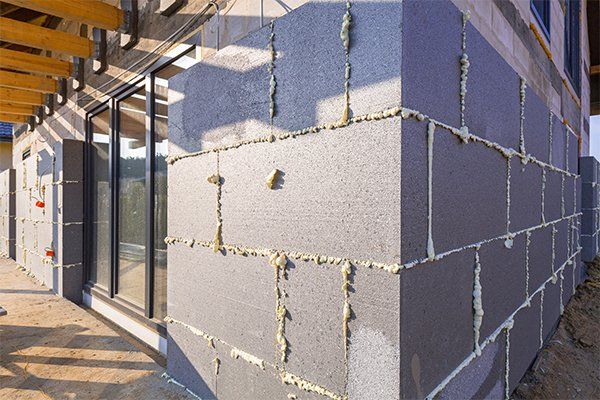Expert In Wall Insulation
All new construction today is required to have a minimum of R-13 in all exterior walls. This is done with fiberglass
before the drywall is put on. For existing walls built without existing insulation Eagle Insulation
can insulate your walls
to R-13 by blowing cellulose insulation into your 2" x 4" wall cavities. First we drill a one inch hole in all cavities in your wall, then we blow in cellulose insulation to fill the walls. We then patch your holes to match the texture of the stucco on the outside or the drywall on the inside.
Insulating walls for Sound Control:
This is accomplished by the same method as described above. Insulating interior or exterior walls will help muffle noise coming through the wall but will not sound proof the wall.
The Wall Insulation Process using cellulose:
First I inspect the opposite side of the walls to be insulated. I remove any objects that could fall due to vibration. Any holes or gaps are sealed to prevent the insulation from coming through. One inch holes are drilled in each cavity in the wall.
Typically there will be a line of holes 16" apart across the top of the wall and below the fire block which runs across the middle of the wall. I find all the vertical and horizontal wood studs in the wall with a long wire. This shows me exactly where each hole needs to be drilled. Cellulose insulation is blown in under air pressure to completely fill the empty cavity. I then patch the holes using the appropriate material for the surface drilled through.
Stucco:
A hard, non shrinking stucco patch floated on with a rubber trowel to match the texture of the wall.
Wood:
A plug is set into hole and a non-shrinking spackle patch is applied with a tape knife.
Drywall:
The hole is carved around the edges to remove any rough burrs then a plug is set and non-shrinking spackle applied with a tape knife.
After the patch has cured and you have primed and painted the area there will be no visible clue the wall has been drilled. Finally the areas worked on are vacuumed, swept or washed down. It is recommended that insulation of interior or exterior walls be completed before you paint your home.
The Attic Insulation Process using fiberglass batts:
This is only recommended if you plan on doing future work in the attic as batts hold up better to people crawling over them.
Fiberglass batts are laid out as tightly together as possible covering the entire attic, except heat sources. While not creating a seamless blanket of insulation, as with blown in cellulose, it is the next best way to insulate an attic.

